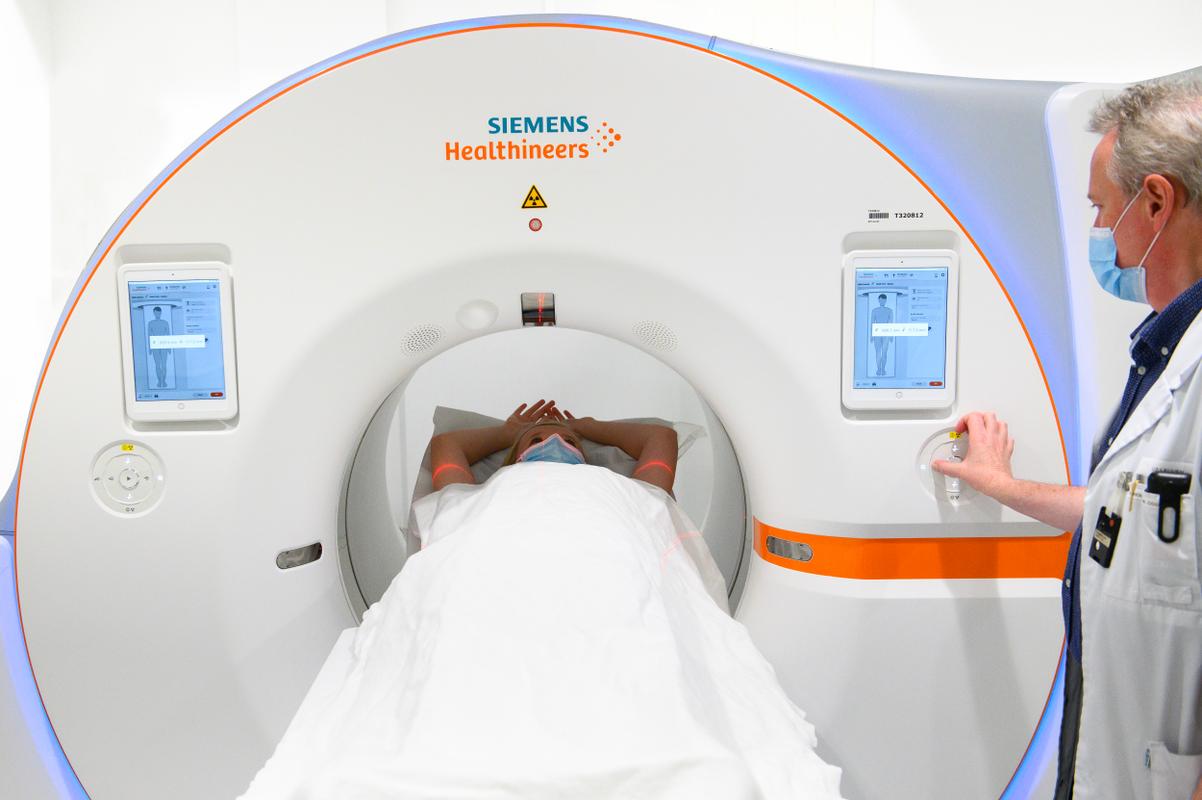For numerous diseases, a CT-scanner is the imaging device of choice. A CT-scanner uses X-rays or photons that are sent through the body. A computer composes a detailed 3D volume image from images taken from various angles. With the current generation of scanners, there is quite a lot of image noise: not all photons can be analysed, leaving the potential of the technology underutilised. UZ Leuven will be the first hospital in Belgium to start using the so-called photon-counting CT system from Siemens Healthineers. This device can analyse every photon individually and therefore produce images that are more detailed than ever.
Refined eye for detail
Head of the radiology department at UZ Leuven, prof. dr. Chantal Van Ongeval: “This new CT scanner allows to look at the structures of the human body with even more detail. Think for example of the smaller bronchi of the lungs, blood vessel walls or small cancers. We will be able to detect diseases and disorders better and sooner than before. A nice example is a bone fracture. We can already get an image of the broken bone, but ultimately we also want to know how strong the broken bone still is to assess what the best treatment would be. This is now possible. In fact, you can describe this CT device as a big microscope, providing imaging with a resolution of 0.2 millimetre, which is 50 per cent sharper than before. This is a quantum leap for medical imaging.”
Low radiation technology
Glenn To of Siemens Healthineers: “In comparison to the best CT devices currently on the market, the photon counting-CT needs thirty per cent less radation dose per scan for it to provide optimal image quality. In addition, the radiation time is very limited: scan times only take a few seconds or even a fraction of that. This technological breakthrough creates new possibilities for CT examinations that will benefit the patient.”
Professor Van Ongeval: “Thanks to the photon-counting CT scanner, UZ Leuven will no doubt opt for a CT scan more frequently because the benefits greatly outweigh the radiation of a CT scan, especially now that we can significantly reduce the dose. Thanks to the low radiation characteristics of the new technology, high-risk patients, such as children, will now also qualify more often. Imaging via CT or MRI will always remain complementary to one another, but the value ratio does change. For examinations in the field of cardiology, respiratory diseases, vascular pathology and oncology, this CT scanner is a fully fledged alternative for an MRI scan, which often has long waiting times.”
New possibilities
UZ Leuven is one of the twenty five hospitals worldwide, and the first in Belgium, to start using the new device from Siemens Healthineers. In 2022, when the device will be made available for the commercial market, other hospitals will presumably follow. According to prof. dr. Van Ongeval the photon counting technology is currently the reference in the field of CT imaging. “The new possibilities are already endless, and this is only the beginning of the story. In addition to increased detail, we want to use energy channels in the photon counter, so that certain tissues can be shown selectively. The use of those same energy channels also allows a better detection of contrast fluids during a scan. As a result we have to administer up to 30% less contrast fluid. At the same time, we can keep the finger on the pulse of the use of new types of contrast fluids, with less or without iodine. We especially hope to be able to do this soon in collaboration with other hospitals. This will give the new method a real foothold”, professor Van Ongeval concludes.
